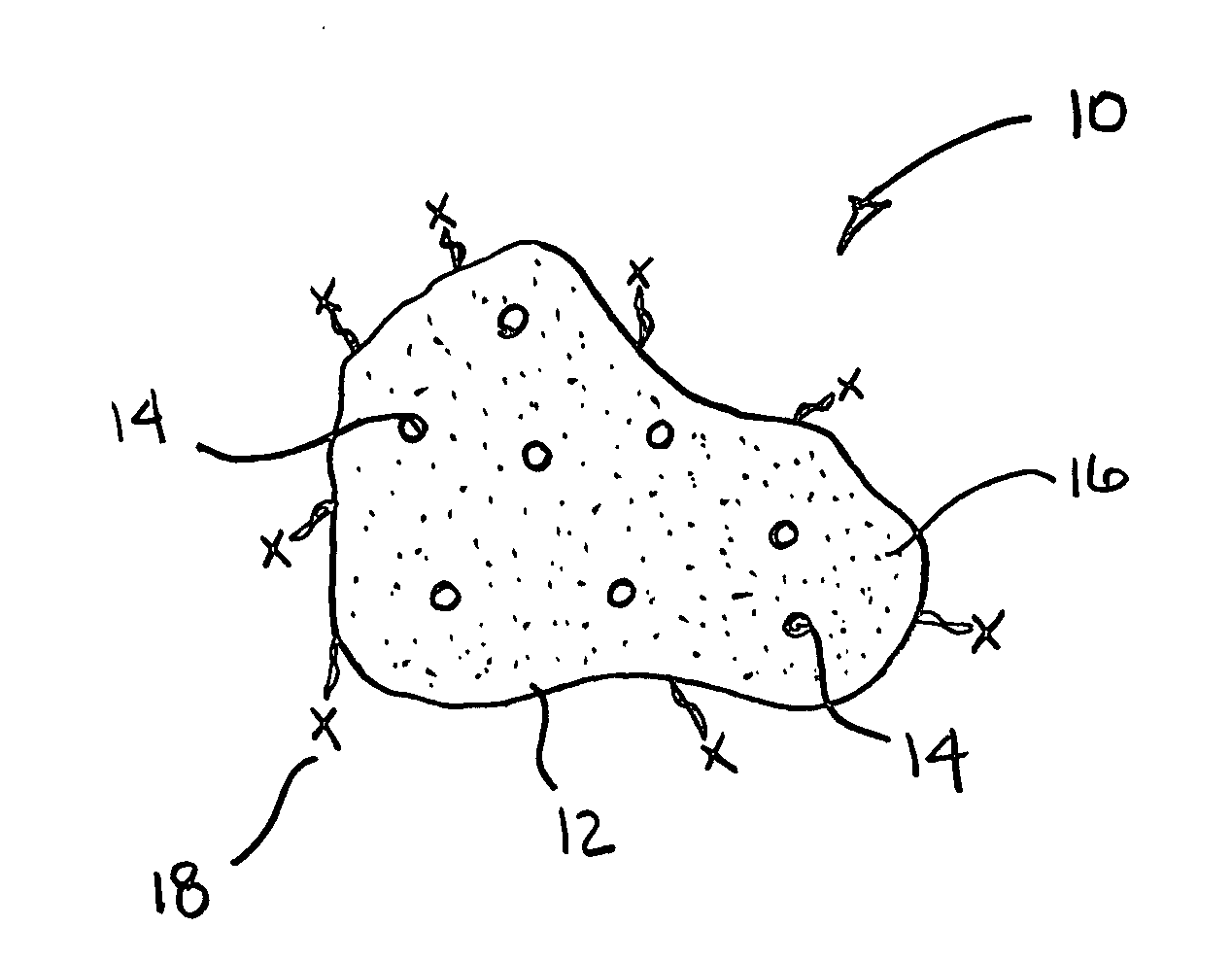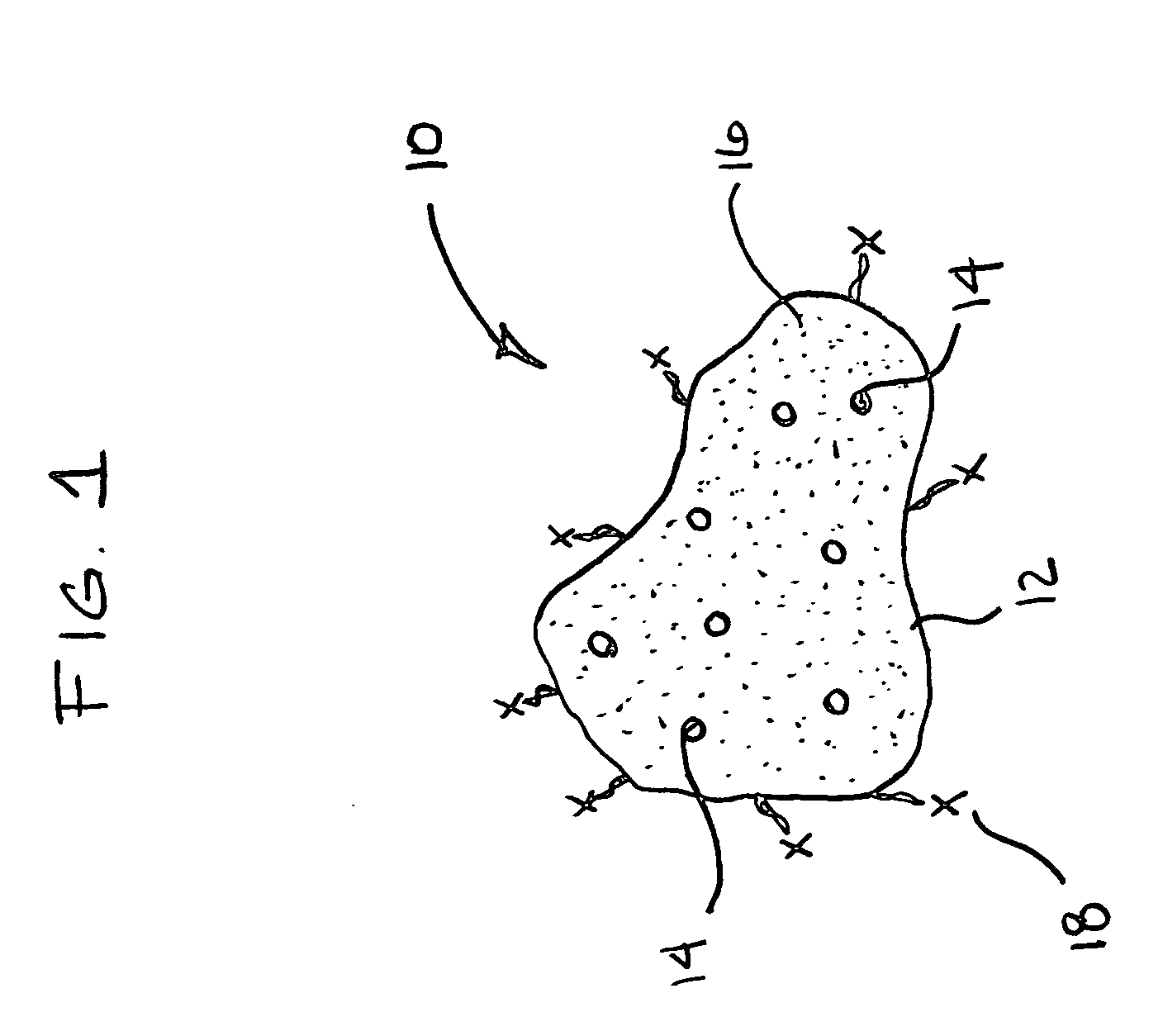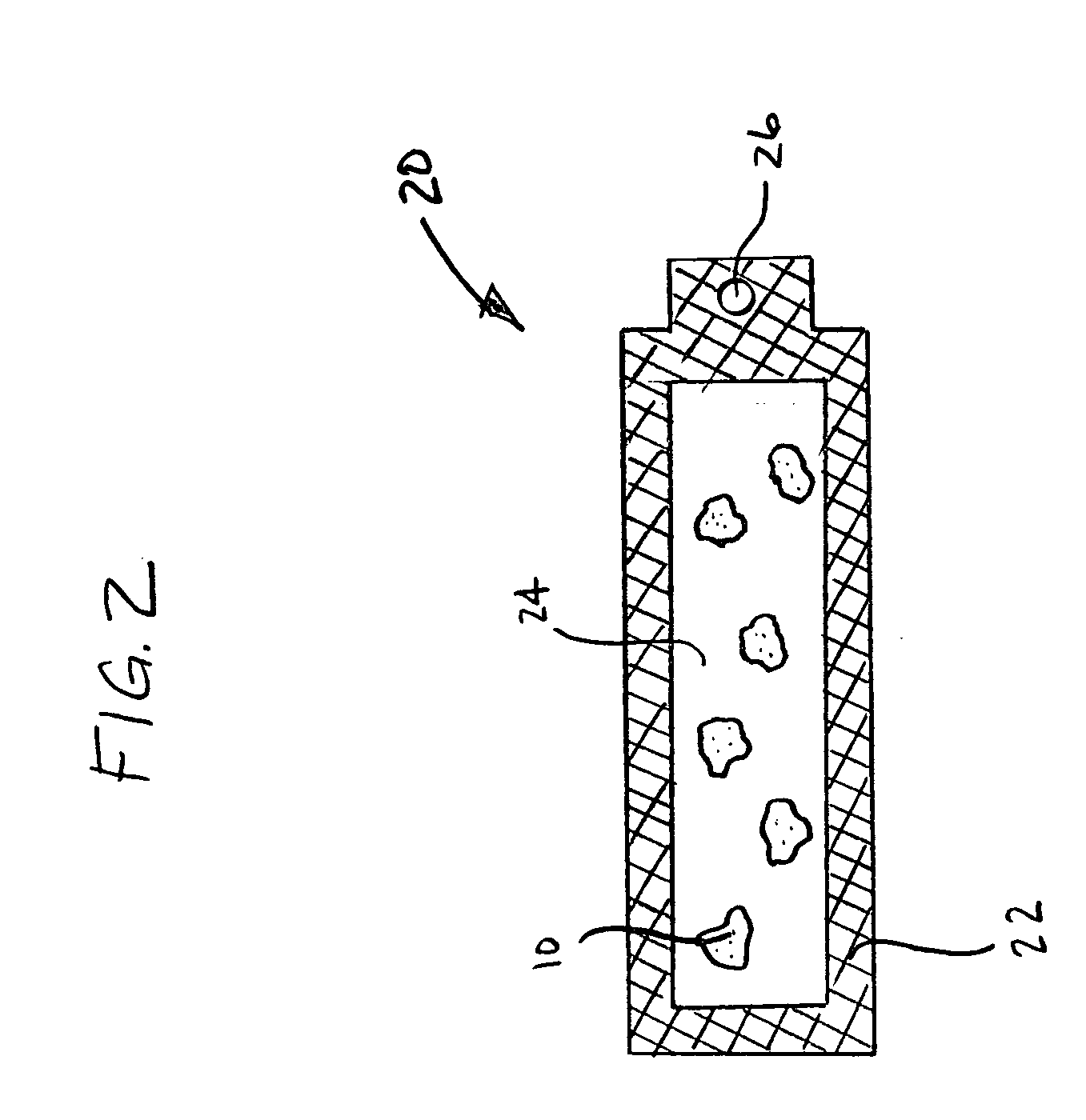Materials for storing and releasing reactive gases
a technology of reactive gases and materials, applied in the direction of biocide, packaged goods, separation processes, etc., can solve the problems of difficult use in many small volumes, limited use of inability to store, and high cost, and achieve the effect of reducing the cost of gas generation
- Summary
- Abstract
- Description
- Claims
- Application Information
AI Technical Summary
Benefits of technology
Problems solved by technology
Method used
Image
Examples
example 1
Generation of CLO2 via Ploymer / Tap-Water Contact
[0123] Sodium chlorite, technical grade, was dissolved in tap water and mixed with commercially available polyacrylic acid and polyacrylamide-containing polymer particles. These polymer particles quickly absorbed the sodium chlorite solution. Slowly, over time, a faint chlorine smell was detected from the container of particles and the individual particles obtained a faint green color. The particles containing chlorine dioxide were observed to be stable over a wide temperature range for many weeks. When exposed to the atmosphere, the particles slowly returned to their original clear form.
example 2
Generation of CLO2 via Mixing of Individual Precursor Particles
[0124] Sodium chlorite, technical grade, was dissolved in tap water and mixed with absorbent polyacrylic acid and polyacrylamide copolymer particles. The polymer particles absorbed the chlorite solution. Hydrochloric acid, 31%, was added to water and this solution mixed with polyacrylic acid and polyacrylamide copolymer particles. The polymer particles absorbed the acid solution. Subsequently, the two different particle types, sodium chlorite solution particles and the acid solution particles, were mixed homogeneously. Over time, the particles turn different shades of yellow, and a strong chlorine smell can be detected from the container housing the particles. The solution precursor concentration contained by the two particle types directly affects the rate at which the particles generated chlorine dioxide gas and obtained a yellow color.
example 3
Generation of CLO2 via Chlorite Pellet and Acid Solution Cntaining Particles
[0125] Sodium chlorite, technical grade, was compressed into a pellet using a small hand press. Hydrochloric acid, 31%, was added to water and the subsequent solution absorbed into polyacrylic acid and polyacrylamide copolymer particles. The pellet containing sodium chlorite was placed into contact with the acid solution containing particles. The polymer particles in direct contact with the sodium chlorite pellet immediately turned brown in color, while particles not in direct contact with the pellet slowly obtained various shades of yellow. After complete dissolution of the sodium chlorite pellet, all particles obtained the same shade of yellow, indicating diffusion of the chlorine dioxide gas throughout the polymer particles.
PUM
| Property | Measurement | Unit |
|---|---|---|
| Composition | aaaaa | aaaaa |
| Polarity | aaaaa | aaaaa |
| Current | aaaaa | aaaaa |
Abstract
Description
Claims
Application Information
 Login to View More
Login to View More - R&D
- Intellectual Property
- Life Sciences
- Materials
- Tech Scout
- Unparalleled Data Quality
- Higher Quality Content
- 60% Fewer Hallucinations
Browse by: Latest US Patents, China's latest patents, Technical Efficacy Thesaurus, Application Domain, Technology Topic, Popular Technical Reports.
© 2025 PatSnap. All rights reserved.Legal|Privacy policy|Modern Slavery Act Transparency Statement|Sitemap|About US| Contact US: help@patsnap.com



